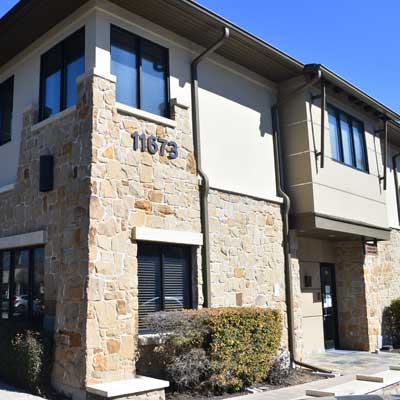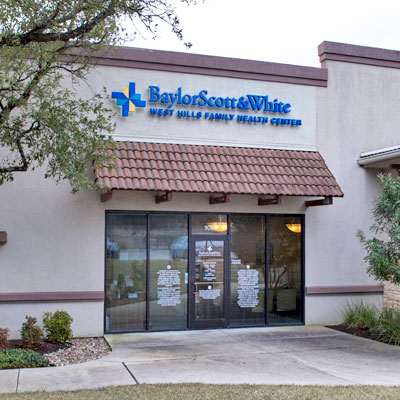What is high blood pressure?
Blood pressure is the force of blood pushing against your blood vessel walls. Your heart generates this force each time it beats and pumps blood from the heart into the blood vessels. When you have high blood pressure, medically known as hypertension, the force of blood is too strong, making the heart work harder to move blood.
Types of high blood pressure
There are two main types of high blood pressure, or hypertension:
- Primary hypertension: This is the most common type of high blood pressure. Also known as essential hypertension, primary hypertension is not caused by another medical condition but can develop over time as you age.
- Secondary hypertension: This type of high blood pressure is caused by other medical issues or certain medications.
Primary and secondary hypertension can also fall into one of three sub-types:
- Resistant hypertension: This form does not improve with treatment or needs multiple types of medication to manage.
- Malignant hypertension: This form is severe and can damage your organs.
- Isolated systolic hypertension: This occurs when your systolic pressure goes above 140 and your diastolic pressure drops below 90.
High blood pressure symptoms
High blood pressure often has no symptoms. Over time, it can damage the heart, blood vessels, eyes and other organs and increase your risk of health conditions, such as heart failure, heart attack and stroke.
You can control high blood pressure, however, and help prevent these problems.
What causes high blood pressure?
Primary hypertension can develop for many reasons, mainly due to your lifestyle and certain health conditions.
Common causes include:
- Being overweight or obese
- Drinking too much alcohol
- Eating a high-salt diet
- Having high cholesterol
- Not getting enough exercise
Secondary hypertension originates from at least one identifiable cause.
Common triggers include:
- Certain medications, including immunosuppressants, some pain relievers, and oral contraceptives
- Kidney disease
- Sleep apnea
- Diabetes
- Recreational drug use
- Smoking
Risk factors for hypertension
High blood pressure can also develop due to causes that are beyond your control, such as:
- Age: More than half of all Americans 60 and older have high blood pressure.
- Family history: Having family members with high blood pressure or heart disease increases your risk.
- Race: African American people are more likely than people of other races to have high blood pressure.
- Medical conditions: Having specific medical conditions, such as chronic kidney disease, metabolic syndrome, obstructive sleep apnea or thyroid disease.
It’s not possible to change your race, age or family history. However, you can work with your healthcare providers to manage health conditions and lifestyle habits that increase your risk and prevent those conditions from raising your blood pressure.
What are the complications of high blood pressure?
Because high blood pressure can harden or narrow arteries and reduce blood flow to the heart, it can lead to many other health complications, including:
- Heart attack or stroke: High blood pressure puts extra strain on arteries that supply blood and oxygen to the brain and heart.
- Aneurysm: High blood pressure creates inflammation and stress on arteries that can increase your chances of developing an aneurysm.
- Heart failure: High blood pressure can cause structural changes and damage to the heart over time.
- Kidney problems: Narrow or damaged blood vessels can prevent the kidneys from removing waste and other fluids from the body.
- Eye problems: Unhealthy blood vessels can damage the retina (known as hypertensive retinopathy) and lead to blurred vision, vision loss and optic nerve damage.
- Metabolic syndrome: This is a group of health conditions that occur together, such as high blood pressure, obesity and high blood sugar.
Diagnosing high blood pressure
You can learn if your blood pressure is high by checking it regularly at home or by your healthcare provider.
Blood pressure is measured in two numbers:
- Systolic pressure: This refers to the pressure inside the artery when the heart contracts and pumps blood through the body.
- Diastolic pressure: This refers to the pressure inside the artery when the heart is at rest.
When you have a blood pressure reading, the numbers are provided in millimeters of mercury, or mm Hg, a measure of how high the mercury column in the blood pressure cuff rises. You may have high blood pressure if your systolic or diastolic readings are consistently above normal levels.
-
Blood pressure categories
The National Heart, Lung, and Blood Institute (NHLBI) of the National Institutes of Health defines healthy and high blood pressure for adults as:
Normal blood pressure
- Less than 120 mm Hg (systolic)
- Less than 80 mm Hg (diastolic)
Elevated blood pressure
- 120-129 mm Hg (systolic)
- Less than 80 mm Hg (diastolic)
High blood pressure
- 130 mm Hg or higher (systolic)
- 80 mm Hg or higher (diastolic)
Note: These numbers are only a guide. Your doctor can tell you whether you have normal, high or elevated blood pressure based on these numbers and other factors that influence your overall health.
-
Taking your blood pressure at home
If your blood pressure is high, your provider may recommend getting a home blood pressure monitor so you can check it regularly in a comfortable environment. You can also check your blood pressure using machines at pharmacies or health fairs.
If you purchase a home monitor, these tips can help ensure accurate blood pressure readings.
- Choose the correct cuff size.
- Empty your bladder before taking your blood pressure.
- Sit quietly for at least five minutes before you take your blood pressure.
- Put the cuff on your bare arm.
- Support your arm at heart level.
- Sit with your legs uncrossed and feet flat on the floor.
- Don’t talk while you’re taking the reading.
High blood pressure treatment
Treatment for high blood pressure involves lifestyle changes and medications. Healthcare providers tailor treatment based on your blood pressure readings, the causes of your high blood pressure, and your underlying conditions.
Lifestyle changes
You may be able to control high blood pressure with these healthy lifestyle changes:
- Control stress: Stress can cause you to engage in habits, such as eating unhealthy foods and drinking too much alcohol, which can affect your blood pressure.
- Eat a heart-healthy diet: Choose foods that are low in salt and low in saturated fat.
- Get plenty of exercise: The American Heart Association recommends 150 minutes of moderate-intensity aerobic activities, such as walking, every week. Add strength training exercises, such as weightlifting, twice a week.
- Limit your alcohol intake: Men should drink only two drinks a day, and women should drink only one.
- Maintain a healthy weight: Body mass index (BMI) is a measure of your weight compared with your height. Aim for a BMI score between 18 to 25.
- Quit smoking if you smoke: Cigarette smoke damages your heart as much as it damages your lungs.
Medications
If lifestyle changes alone aren’t enough, your provider may prescribe medication to help lower your blood pressure. Some types of blood pressure medications act on the heart and blood vessels. Others remove excess fluid or salt from the body.
To help your medication(s) work as well as possible:
- Take your medication at the same time each day.
- Write yourself notes, use an alarm or keep your pills by your toothbrush to remember to take them.
- Ask your provider what you should do if you miss a pill.
- Never stop taking your medication unless your provider tells you to. Stopping on your own could be harmful.
Find a location near you
Being proactive about your health goes a long way to helping you avoid high blood pressure and its many complications. Your cardiologists can work with you to keep your blood pressure under control.
Baylor Scott & White cardiologists are available at our many heart and vascular locations throughout Central and North Texas.

Baylor Scott & White Cardiovascular Specialists - Mesquite
5308 N Galloway Ave Ste 201, Mesquite, TX, 75150- Monday: 8:00 am - 5:00 pm
- Tuesday: 8:00 am - 5:00 pm
- Wednesday: 8:00 am - 5:00 pm
- Thursday: 8:00 am - 5:00 pm
- Friday: 8:00 am - 5:00 pm

Baylor Scott & White Cardiovascular Specialists - Rockwall
6705 Heritage Pkwy Ste 202, Rockwall, TX, 75087- Monday: 8:00 am - 5:00 pm
- Tuesday: 8:00 am - 5:00 pm
- Wednesday: 8:00 am - 5:00 pm
- Thursday: 8:00 am - 5:00 pm
- Friday: 8:00 am - 5:00 pm

Baylor Scott & White Clinic - Austin Jollyville Road
11673 Jollyville Rd Ste 205, Austin, TX, 78759- Monday: 8:00 am - 4:30 pm
- Tuesday: 8:00 am - 4:30 pm
- Wednesday: 8:00 am - 4:30 pm
- Thursday: 8:00 am - 4:30 pm
- Friday: 8:00 am - 3:00 pm
- Monday: 8:00 am - 3:00 pm
- Tuesday: 8:00 am - 3:00 pm
- Wednesday: 8:00 am - 3:00 pm
- Thursday: 8:00 am - 3:00 pm
- Friday: 8:00 am - 2:00 pm

Baylor Scott & White Family Medicine Residency - Waxahachie
2460 N Interstate 35E Ste 215, Waxahachie, TX, 75165- Monday: 8:00 am - 5:00 pm
- Tuesday: 8:00 am - 5:00 pm
- Wednesday: 8:00 am - 5:00 pm
- Thursday: 8:00 am - 5:00 pm
- Friday: 8:00 am - 5:00 pm

Baylor Scott & White Specialty Clinic - Salado
213 Millcreek Dr Ste 190, Salado, TX, 76571- Monday: 8:00 am - 5:00 pm
- Tuesday: 8:00 am - 5:00 pm
- Wednesday: 8:00 am - 5:00 pm
- Thursday: 8:00 am - 5:00 pm
- Friday: 8:00 am - 5:00 pm

Baylor Scott & White West Hills Family Health Center
11805 FM 2244 Rd Ste 100, Bee Cave, TX, 78738- Monday: 7:30 am - 4:30 pm
- Tuesday: 7:30 am - 4:30 pm
- Wednesday: 7:30 am - 4:30 pm
- Thursday: 7:30 am - 4:30 pm
- Friday: 7:30 am - 12:00 pm
- Monday: 7:30 am - 4:00 pm
- Tuesday: 7:30 am - 4:00 pm
- Wednesday: 7:30 am - 4:00 pm
- Thursday: 7:30 am - 4:00 pm
- Friday: 7:30 am - 12:00 pm